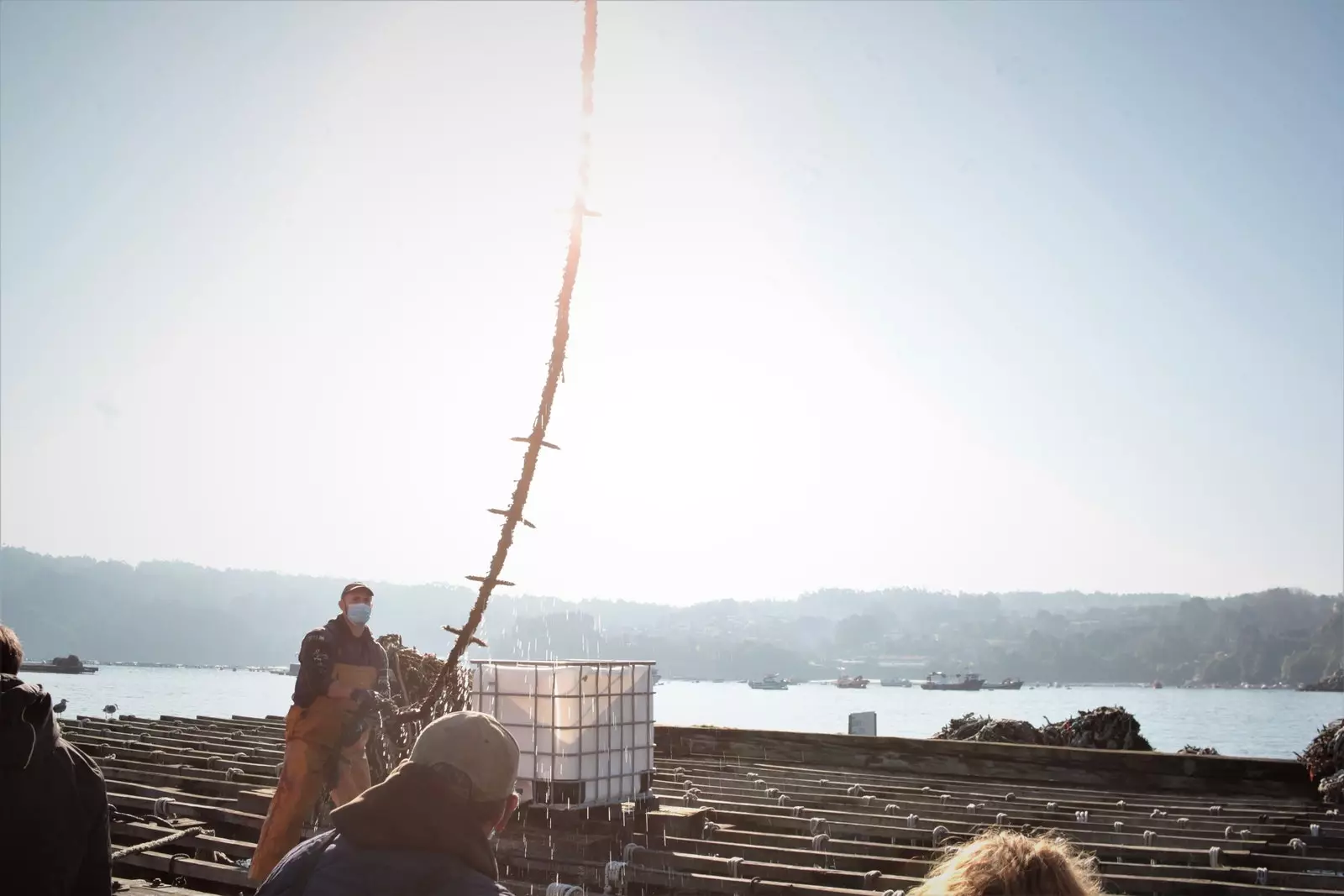
Why love the Galician mussel
They are natural vacuums . They filter up to 25 liters of water per day. Protein, earthy taste and low price . Has it all. The Galician canning industry exports it all over the world, but they are raised in one place: in the rafts, wooden structures that float in the estuaries.
They are raised among cottons. Galician mussels are wrapped on a rope with cotton mesh , and are hung on the trays to grow. In twelve days the mesh falls off and the mussel takes root on the cape. Riscos, limpets and craca is what usually sticks to the shell of this bivalve when it breeds in the Galician estuaries. Like the saltpeter from the beating of the waves against the hull of the ship first thing in the morning. We spent a working day with Galician bateeiros.
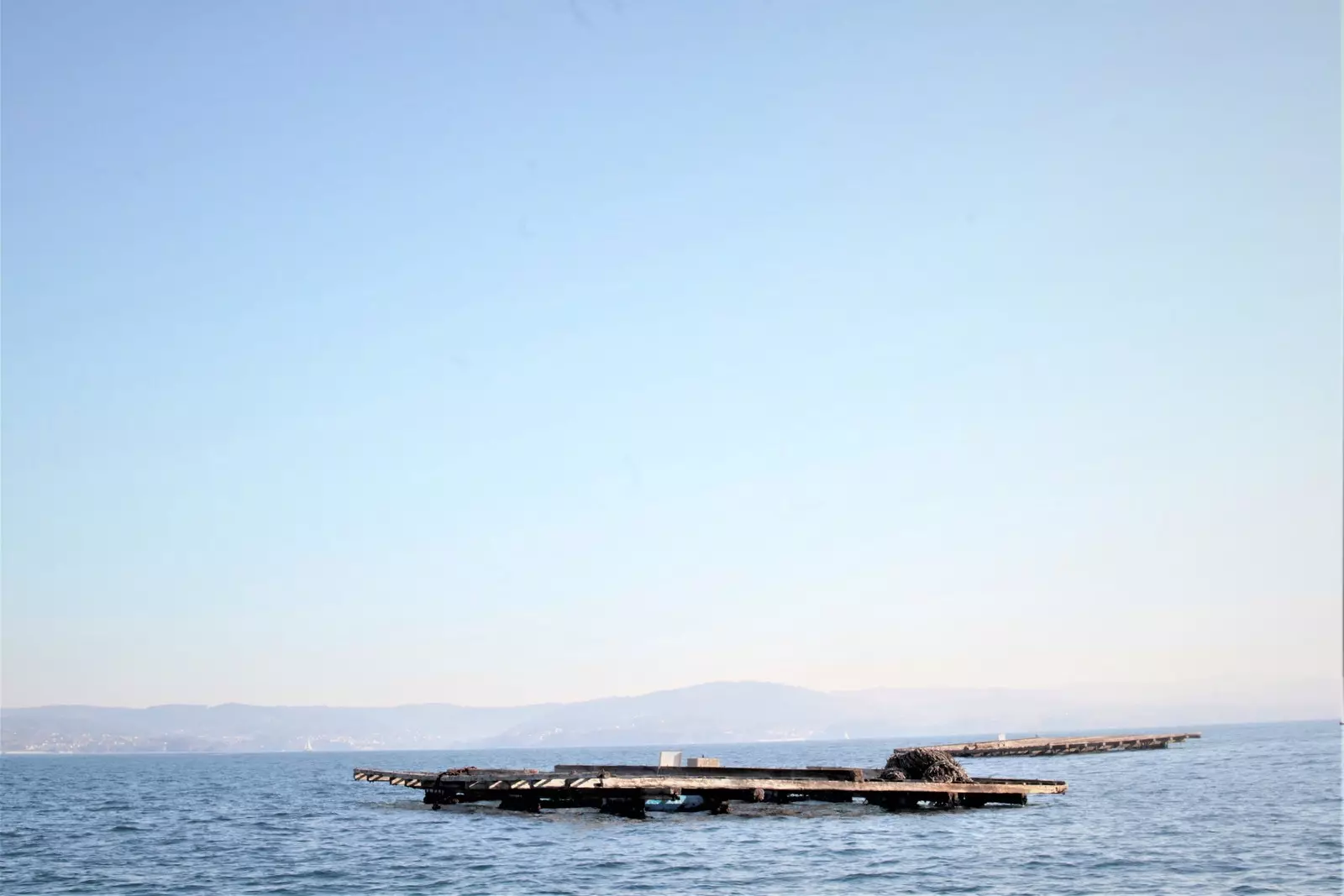
A raft over the Galician estuaries
Living in cotton wool wasn't so much a metaphor. The farmed mussels are attached to a rope, a rope, and wrapped with a cotton mesh to hold them and allow them to take root. In the stringing process, plastic sticks are placed between the ends so that the mussel cones do not fall, which were previously made by hand and made of wood by the bateeiros themselves.
They are bivalves that grow fast in the Galician estuaries, so it is essential to treat them well and give them a cable from time to time. They grow so much and so fast -about six months- that the weight of the mussels can cause them to detach from the rope, so you have to unfold: they are collected again by means of a crane, since these ropes usually weigh their own; the end is cleaned, the size is chosen and the largest ones return to the rope. And there they stay for a year until it reaches its optimum size, which is usually between 7 and 10 cm.
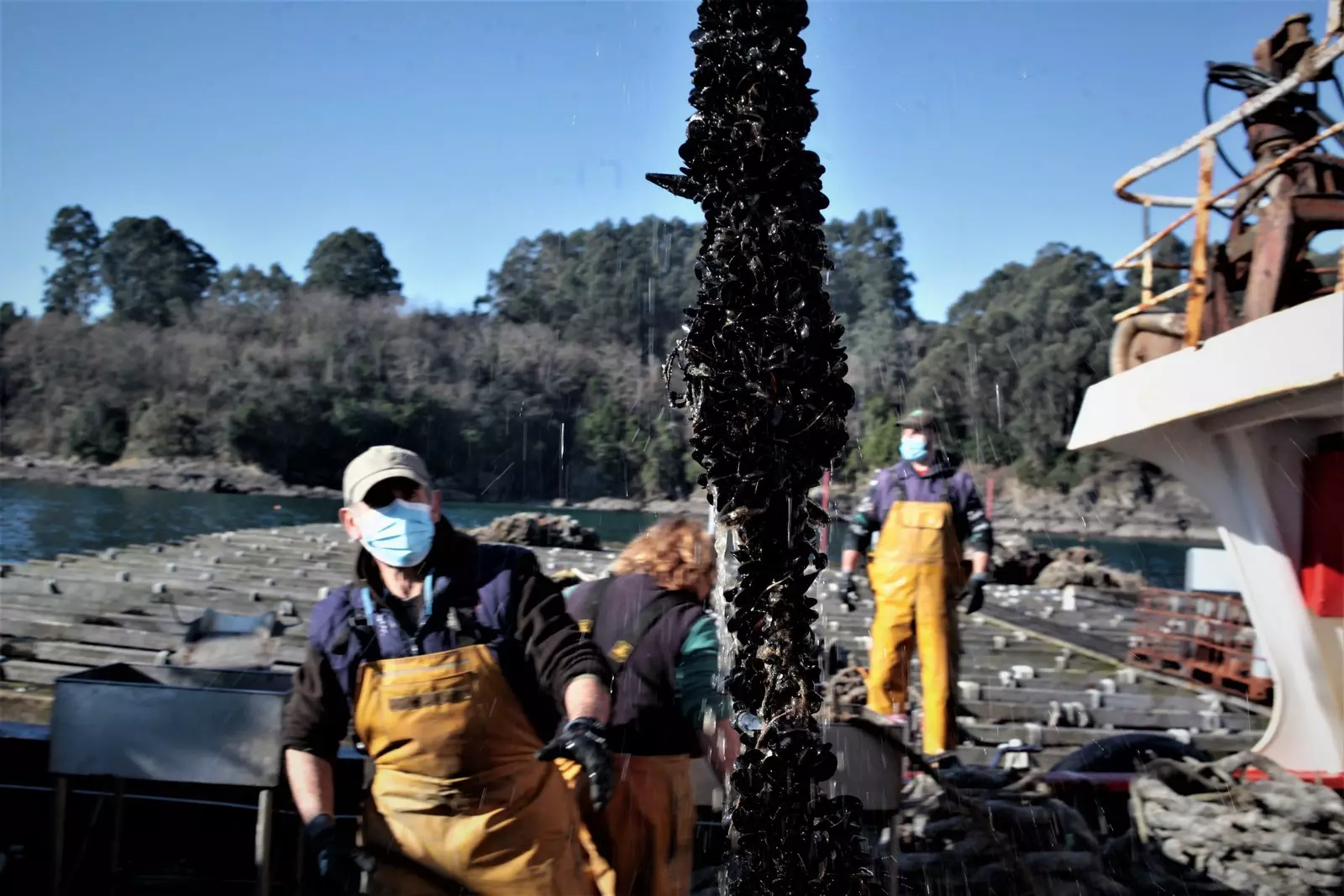
The mussel, fallen from the sky
The point that we have skipped is the first and the most obvious. Where does it come from? The seed, -the cheek- the baby mussel is obtained from the rocks, although there are also collector ropes. This is the most spectacular part -and the only one we don't have photographs of- because they are professional divers who roam the coast from December to April to collect them. And we already know what happens down there. Blue and turquoise tones, fauna and flora everywhere, and that contrast with the white light of a day that hardly has any clouds. And silence. Anyone who has done scuba diving and knows how to appreciate the beauty of the sea will understand.
The bateeiros and bateeiras use eight-hour work days to care for this bivalve. You have to go look for it, place it on ropes, watch how it grows and feeds, place them again when they are big and the rope does not break, clean them, collect them and select them. In addition, you have to take care of the boat and the rafts.
The rafts are floating wooden structures that remain anchored to the sea floor in strategic places of the Galician estuaries. They do it through a dead man, which is a concrete block anchored to chains, so that the structure does not change places. Unique places in the world where shellfish and bivalves grow naturally on ropes tied to the structure. These have two parts, like an iceberg: the part that can be seen, that supports the sun, is called the ridge, and it is made of a different material than the one that is in contact with the water.
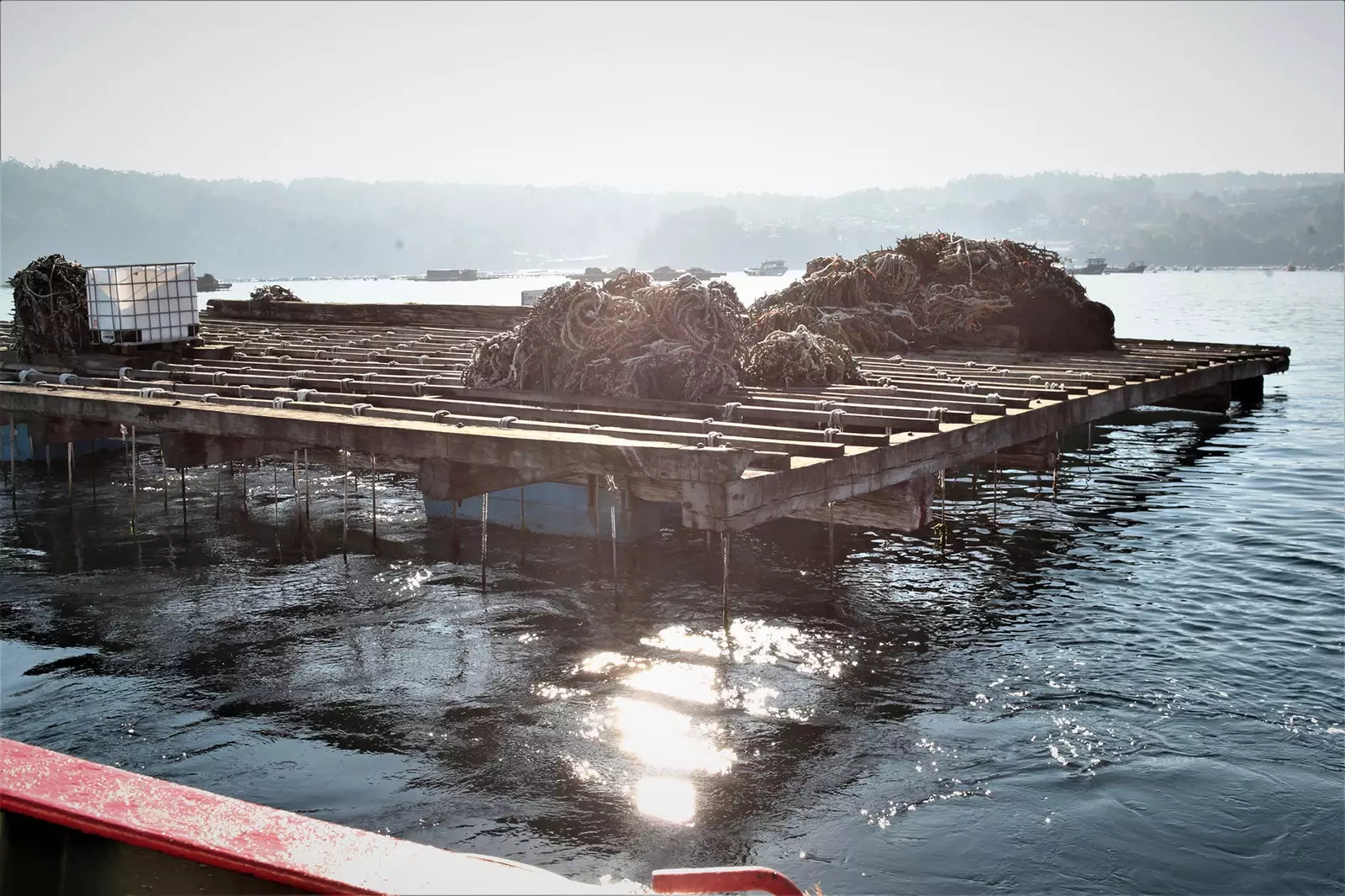
A punt, seen from the boat
The cleaning and renovation of the waters in the Galician estuaries and the raft system produces in Galicia about 255,000 tons of this bivalve , which are mostly sold to cookers who cook them to package and trade. Already exports to the rest of the world. Although the meat of a large mussel is highly valued, the most demanded are small and medium sizes, easier to transport, package and consume, since that intensity of flavor remains the same.
We have been eating it for about 6,500 years -There's nothing- Although it is an animal that has been on this planet for eons, traces of its consumption were found on the Iberian Peninsula in fishing instruments found in the Cave of the Mussels in Belones (Cape Palos, Cartagena). They even used them to decorate. In modern history, and unlike other shellfish, the mussel did enjoy a good reputation. Already in the 18th century, the Regidor of Santiago de Compostela, José Cornide de Saavedra, said of the mussel that “its meat is the best after that of the oyster”.
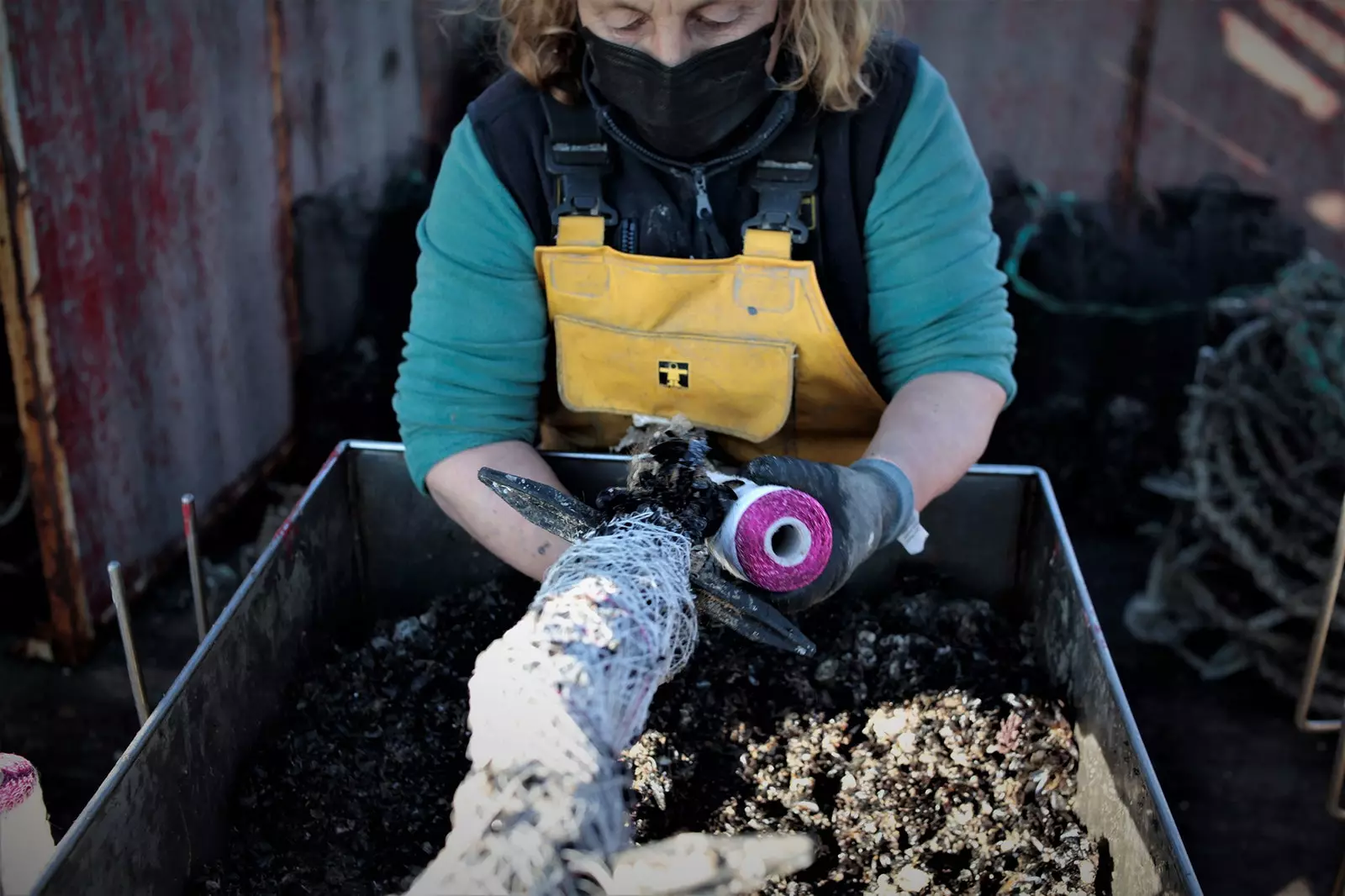
The young mussels are tied to a rope and wrapped with a cotton mesh to hold them and allow them to take root.
The canning industry soon saw this product as an ally . Putting things inside cans for conservation was born, of course, of a shipwreck . It was in 1840 when a French sailing ship fell in the Finisterre coasts , loaded with corked glass containers. Although the preservation in salting or smoking It already existed, a year later there were companies based in the area that prepared hermetically sealed containers that were heated to high temperatures. Today there are more than a hundred companies throughout the country, of which almost seven dozen are in Galicia and account for 85% of the national production of canned fish.
This system creates in 1812 Nicholas Appert , a French inventor, at the call of Napoleon to find a method that would allow food in good condition to be brought to the French troops at the front. And English Peter Durand smells the invention and tests it with a can . Two other Englishmen -John Hall and Bryan Donkin- worked on the can to optimize it and make it mass-produced. And two other Englishmen - Thomas Kensett and his mother-in-law, Ezra Daggelt - immigrated to the United States with the idea of setting up a similar business. In 1825 his patent for the preservation of food in tin pot . The rest, as you can imagine, is history.
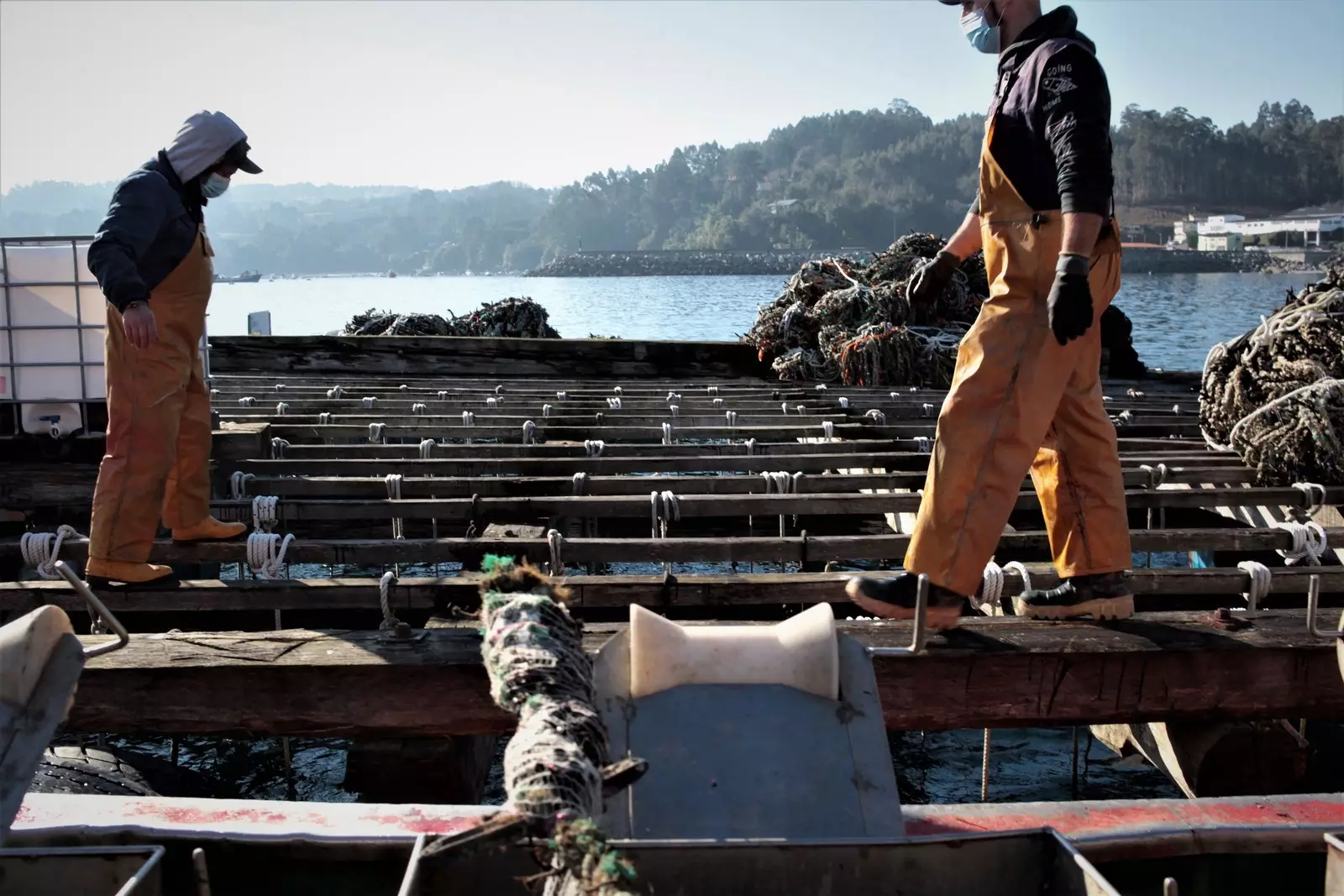
The work on the catwalks of the raft
With the rafts the same thing happens a bit. They began in Catalonia and spread throughout the Mediterranean, but the mussel farms ended up having difficulties in obtaining seed and the extensions of port facilities they ended up expelling the mussel farmers. That added to the effect of worsen water quality led to, for example, in Tarragona there were 38 bateas in 1940 and 40 years later not a single one was registered. To compare today in Galicia there are more than 3,300 rafts registered. Most are in the Arousa estuary.
In Galicia, the first punt was the port of Vilagarcía de Arousa, next to the Ferrazo dam. It was the last attempt Alfonso Ozores Saavedra, that he had been trying to raise mussels on stakes for some time, but the thing did not work out for him. When they settled in the city of Vigo, they observed that** the mussel took eight months to grow** while in Barcelona it took two years. And here they stayed.
Today it is already a gourmet product and has its own Protected Designation of Origin seal. In addition to the well-known preserves that are consumed daily, the sector proposes superior quality products designed for the demanding palate. Some examples, such as the two-year-old mussel from the Ramón Franco company, are made for gourmets. The best mark of the past campaign was a 75-gram mussel, which completely covered an adult hand.
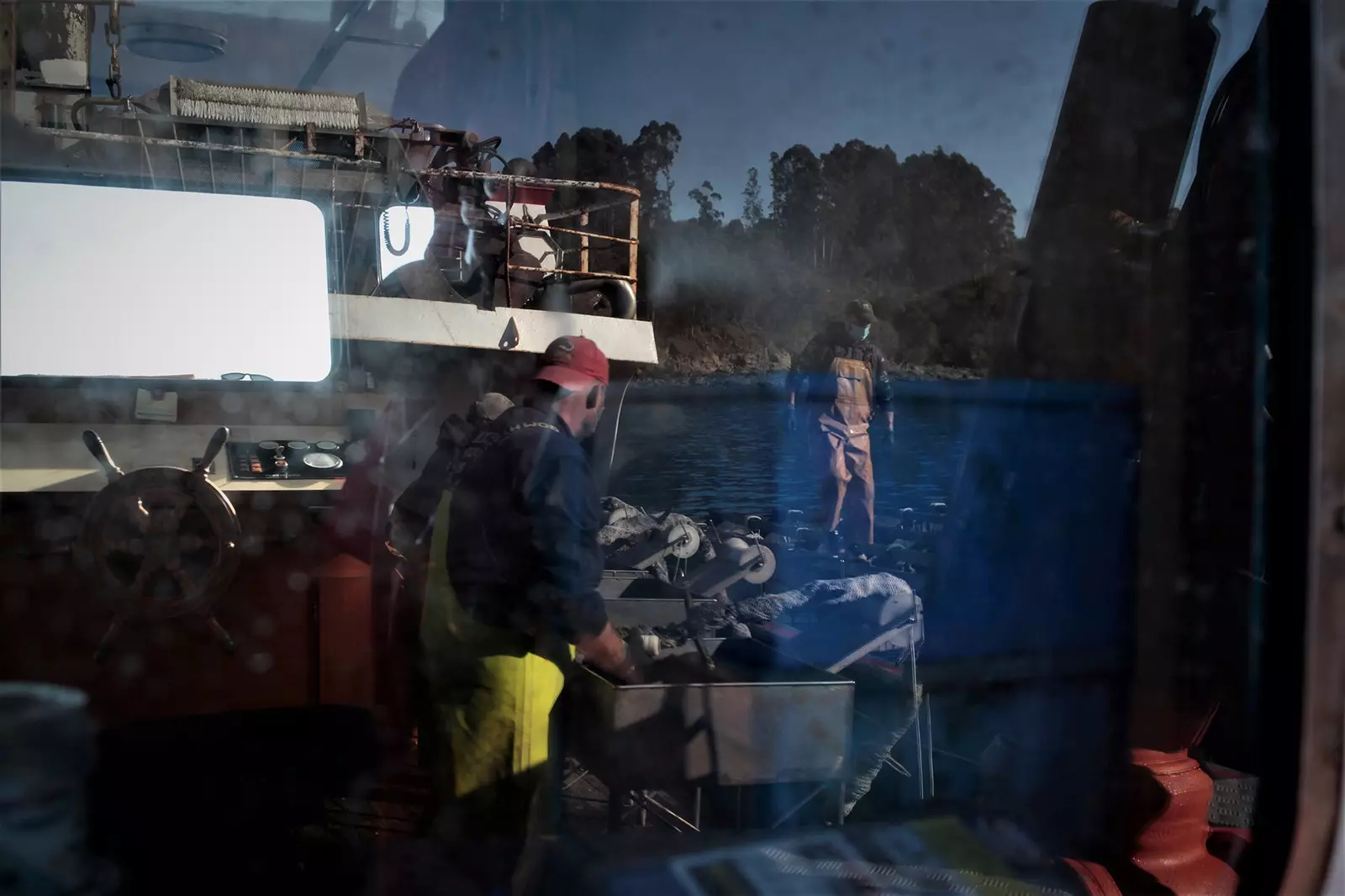
Routine on the boat heading to the rafts
Others, such as the Cambados or Cortizo preserves, La Brújula, Ramón Peña, La Pureza or Los Peperetes, have gourmet mussels in their catalogue. Even an Asturian restaurant, the Güeyu Mar de Ribadesella, has its own line of preserves where they have grilled mussels.
If you prefer the economic line, try the mussels in scallop sauce from Calvo. They are less than 3 euros and have saved the diet of many students.
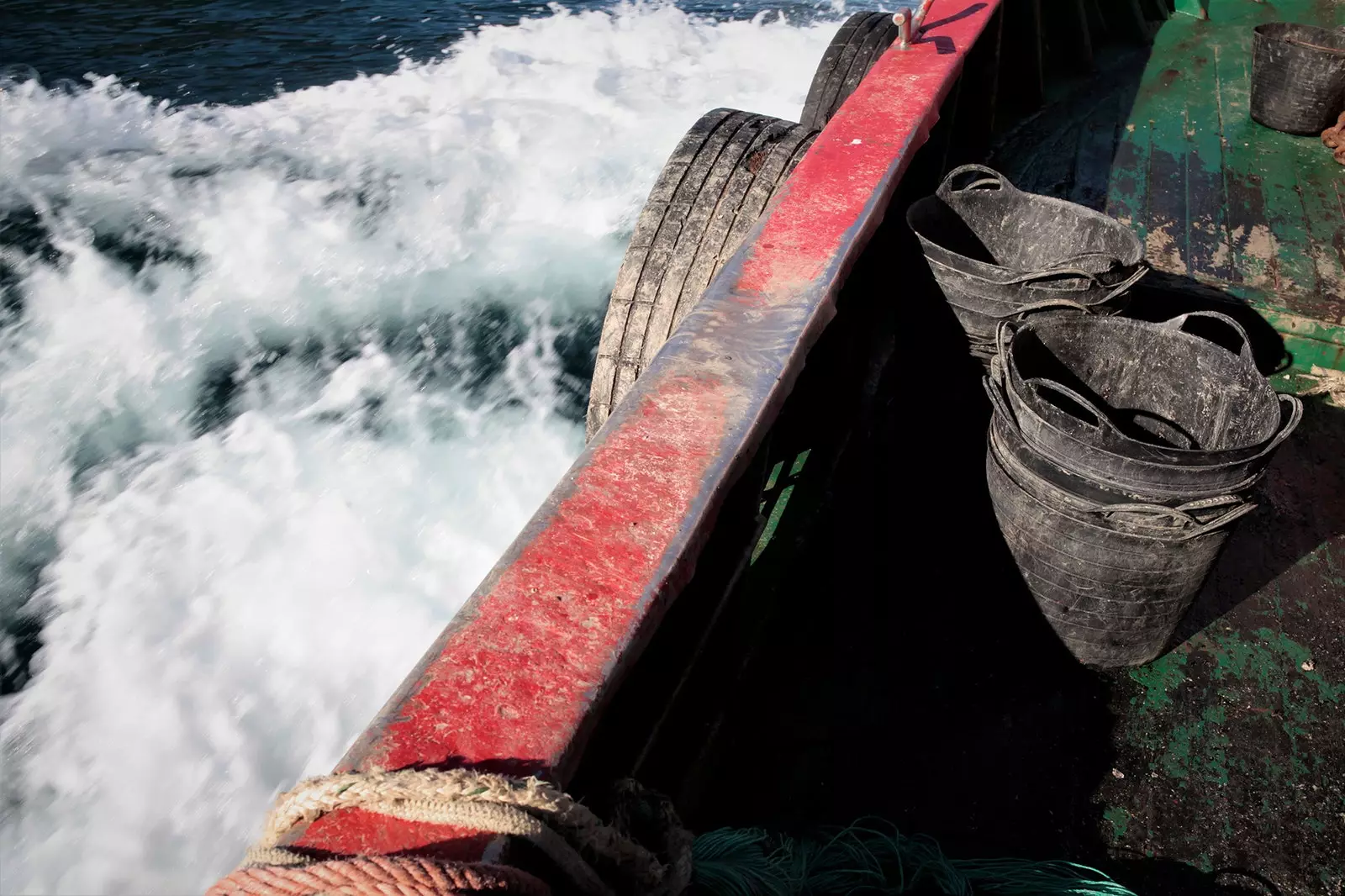
You have to go looking for it, place it on ropes, watch how it grows and feeds... Why love the Galician mussel
